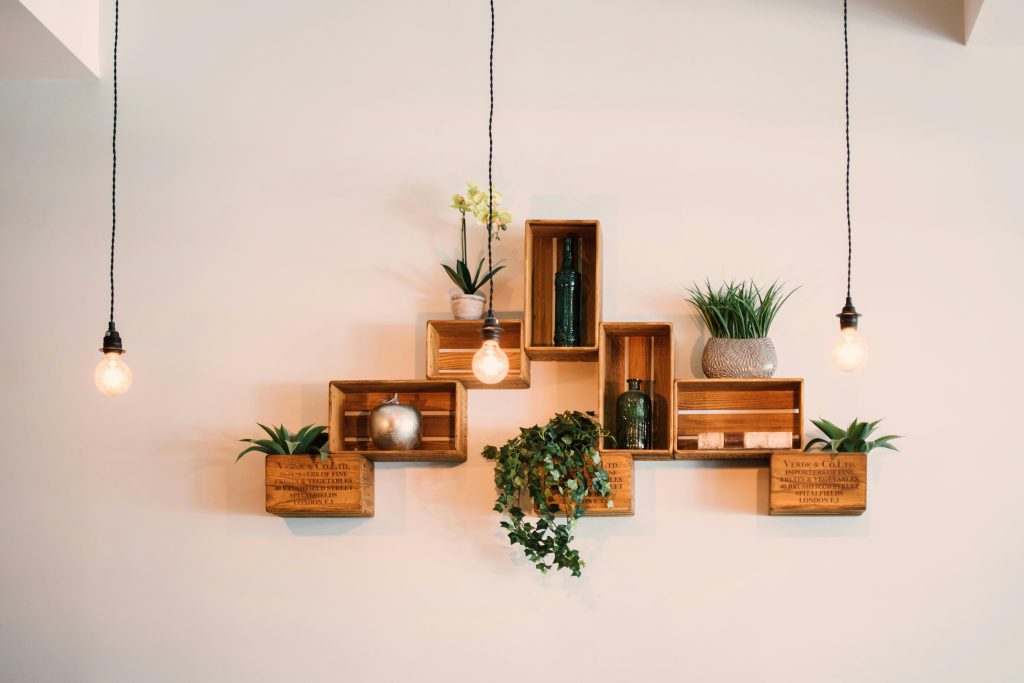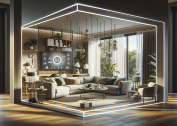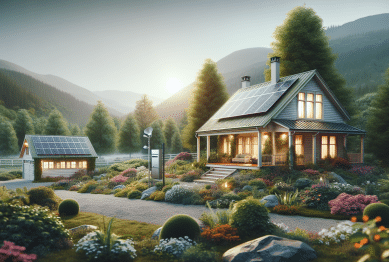In 2025, interior design is embracing a harmonious blend of aesthetics and functionality, reflecting a shift towards spaces that are not only visually appealing but also practical and sustainable. This year, design trends are moving away from minimalist extremes and towards environments that cater to comfort, wellness, and personal expression. Let’s explore how these trends are shaping the interiors of today.

Sustainable Materials: A Commitment to the Environment
Sustainability continues to be a cornerstone of interior design in 2025. Designers are increasingly opting for materials that are both eco-friendly and stylish. Natural elements like stone, wood, and glass are making a significant impact, offering timeless appeal and durability.
- Wood: Sustainable sourcing practices are ensuring that wood remains a popular choice for furniture and flooring. Its warmth and versatility make it suitable for various design styles.
- Stone: Materials like granite and marble are being used not only for countertops but also for decorative elements, adding texture and elegance to interiors.
- Glass: Steel-framed glass walls are gaining popularity, allowing for abundant natural light and creating a sense of openness in spaces .
These materials not only enhance the aesthetic appeal of a space but also contribute to a healthier environment by reducing the carbon footprint.
Multifunctional Spaces: Adapting to Modern Lifestyles
The concept of multifunctional spaces is at the forefront of interior design in 2025. As lifestyles become more dynamic, the need for adaptable spaces has increased.
- Flexible Furniture: Pieces that serve multiple purposes, such as sofa beds and extendable dining tables, are essential in maximizing space in smaller homes.
- Open Floor Plans: Removing unnecessary walls to create open, flowing spaces allows for better utilization and fosters a sense of connection within the home.
- Integrated Technology: Smart home systems that control lighting, temperature, and security are seamlessly integrated into the design, enhancing both convenience and efficiency.
These multifunctional spaces cater to the demands of modern living, providing comfort and practicality without compromising on style.
Wellness-Focused Design: Prioritizing Health and Well-being
In 2025, there is a strong emphasis on creating interiors that promote health and well-being. This trend, known as wellness-focused design, incorporates elements that enhance the physical and mental health of inhabitants.
- Natural Light: Maximizing natural light through large windows and glass doors helps regulate circadian rhythms and improve mood.
- Indoor Plants: Incorporating greenery into interiors not only adds beauty but also purifies the air and reduces stress levels.
- Ergonomic Furniture: Investing in furniture that supports good posture and comfort is crucial, especially for those working from home.
By integrating these elements, interiors become sanctuaries that support a healthy lifestyle.
Personalized Aesthetics: Reflecting Individual Style
Personalization is a key trend in 2025, with interiors reflecting the unique tastes and personalities of their inhabitants.
- Color Palettes: While neutral tones remain popular, there is a growing interest in rich, earthy colors like deep burgundy, navy blue, and terracotta, adding depth and sophistication to spaces .
- Art and Decor: Incorporating personal artwork, heirlooms, and travel souvenirs adds character and tells a story within the space.
- Custom Furniture: Tailored furniture pieces that fit the specific needs and preferences of the homeowner are becoming more accessible.
These personalized touches create spaces that are not only functional but also deeply meaningful.
Technology Integration: Enhancing Convenience and Efficiency
Technology continues to play a significant role in interior design, with innovations that enhance the functionality and efficiency of spaces.
- Smart Appliances: Kitchen and home appliances that can be controlled remotely offer convenience and energy savings.
- Home Automation Systems: Systems that control lighting, climate, and security provide comfort and peace of mind.
- Virtual Design Tools: Augmented reality (AR) and virtual reality (VR) are being used to visualize design changes before implementation, allowing for more informed decision-making.
The integration of these technologies makes living spaces more comfortable and efficient.
Conclusion
The interior design trends of 2025 reflect a shift towards spaces that are not only aesthetically pleasing but also functional, sustainable, and personalized. By embracing these trends, homeowners can create environments that support their lifestyles and well-being. Whether renovating an existing space or designing a new one, the focus is on creating interiors that are as practical as they are beautiful.
Here are the references for the article:
- Elle Decor. “Interior Design Trends 2025.” 2025. https://www.elledecor.com/design-decorate/trends/a63094900/interior-design-trends-2025/
- Architectural Digest. “Top Interior Design Trends for 2025.” 2025. https://www.architecturaldigest.com/story/top-interior-design-trends-2025
- Dezeen. “Sustainable Interior Design Trends 2025.” 2025. https://www.dezeen.com/2025/01/15/sustainable-interior-design-trends-2025/









